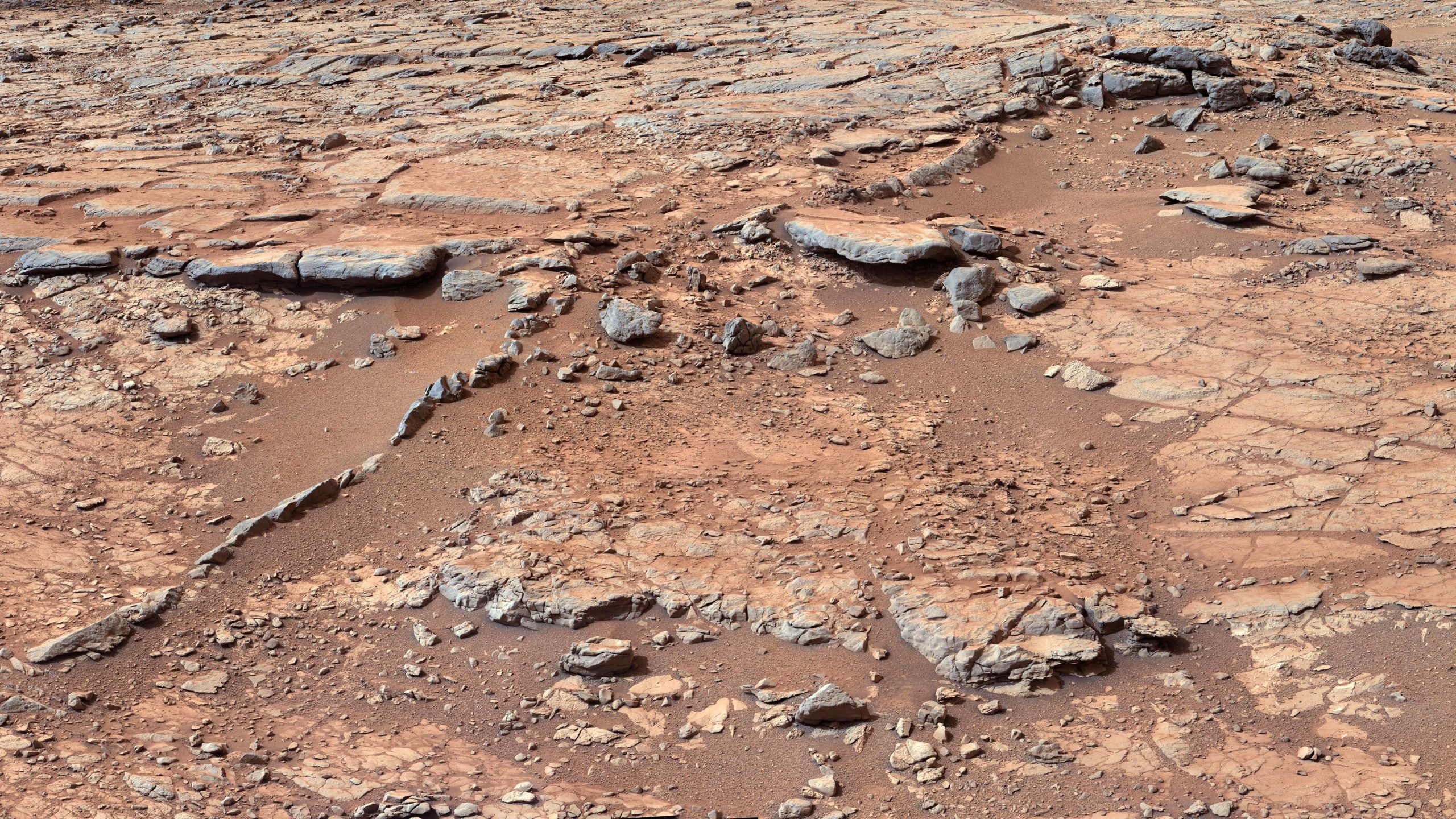
However, because organic carbon can also come from nonliving sources, its presence on Mars does not prove the existence of life there.
Organic carbon has been found on Mars before, but prior measurements only produced information on particular compounds, or represented measurements capturing just a portion of the carbon in the rocks.
The new measurement gives the total amount of organic carbon present in these rocks.
NASA’s Curiosity Mars rover used its Mast Camera, or Mastcam, to capture this area at the edge of a location nicknamed “Yellowknife Bay.” The image is a combination of three mosaics taken on December 24, 25, and 28, 2012 (the 137th, 138th, and 141st Martian days, or sols, of the mission).Since liquid water is necessary for life as we understand it, scientists think Martian life, if it ever evolved, could have been sustained by key ingredients such as organic carbon, if present in a sufficient amount.
The rover drilled samples from 3.5 billion-year-old mudstone rocks in the “Yellowknife Bay” formation of Gale Crater, the site of an ancient lake on Mars.
Besides liquid water and organic carbon, Gale Crater had other conditions conducive to life, such as chemical energy sources, low-acidity, and other elements essential for biology, such as oxygen, nitrogen, and sulfur.
The NASA Mars rover Curiosity used its left Navigation Camera to record this view of the step down into a shallow depression called ‘Yellowknife Bay.’ The descent into the basin crossed a step about 2 feet high, visible in the upper half of this image.NASA’s Curiosity Mars rover used its Navigation Camera (Navcam) to capture this view after it entered a location nicknamed “Yellowknife Bay” on December 12, 2012, the 125th Martian day, or sol, of the mission.
This experiment used oxygen and heat to convert the organic carbon to carbon dioxide (CO2), the amount of which is measured to get the amount of organic carbon in the rocks.
“In this case, the isotopic composition can really only tell us what portion of the total carbon is organic carbon and what portion is mineral carbon,” said Stern.